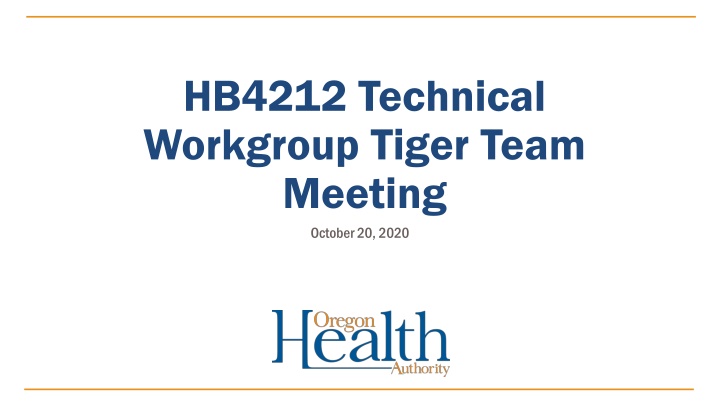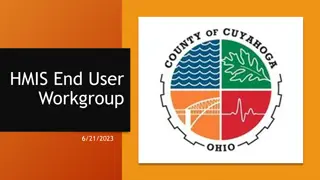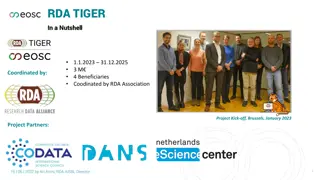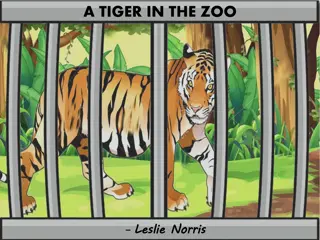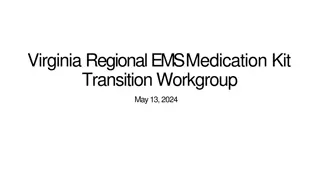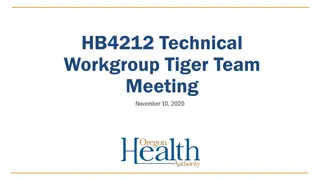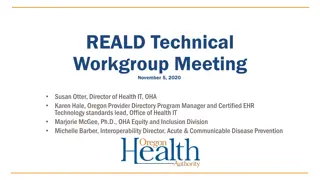HB4212 Technical Workgroup Tiger Team Meeting Summary
Created for HB4212 Technical Workgroup Tiger Team Meeting held on October 20, 2020. The meeting covered agenda items like outlining current reporting requirements related to race and ethnicity, uncovering data reporting issues, and identifying next steps. Discussions included data reporting entities, current state of race and ethnicity data, UDS table demographics characteristics, and REALD race/ethnicity categories.
Download Presentation

Please find below an Image/Link to download the presentation.
The content on the website is provided AS IS for your information and personal use only. It may not be sold, licensed, or shared on other websites without obtaining consent from the author.If you encounter any issues during the download, it is possible that the publisher has removed the file from their server.
You are allowed to download the files provided on this website for personal or commercial use, subject to the condition that they are used lawfully. All files are the property of their respective owners.
The content on the website is provided AS IS for your information and personal use only. It may not be sold, licensed, or shared on other websites without obtaining consent from the author.
E N D
Presentation Transcript
HB4212 Technical Workgroup Tiger Team Meeting October 20, 2020
Agenda Welcome and Introductions Meeting Objectives Work Session Next Steps
Meeting Objectives 1. Outline current reporting requirements related to race and ethnicity 2. Uncover data reporting issues related to alignment to REALD, including gaps in current crosswalks 3. Identify next steps 3
Q1: Data Reporting Entities Who do you report to today? HRSA UDS (FQHCs) NIH And? Annual reporting based on calendar year 4
Q2: Race and Ethnicity Data Current State See next slide for UDS report What do you collect today? ? Categories on UDS report/OMB categories? CDC categories?
UDS table 3B: Demographics Characteristics Line Line Patients by Race Patients by Race Hispanic or Latino Hispanic or Latino Non Non- -Hispanic or Hispanic or Latino Latino Unreported/Refused Unreported/Refused to Report Ethnicity to Report Ethnicity Total Total 1 2a 2b 2 Asian Native Hawaiian Other Pacific Islander Total Native Hawaiian/Other Pacific Islander Black/African American American Indian/Alaska Native White More than one race Unreported/Refused to report race Total 3 4 5 6 7 8 6
REALD Race/Ethnicity Asian Asian Other Other American Indian/Alaska Native American Indian/Alaska Native Alaska Native American Indian Canadian Inuit/Metis/First Nation Indigenous Mexican, Central or South American Black and African American Black and African American African American Afro-Caribbean Ethiopian Somali Other African (Black) Other Black Middle Eastern Middle Eastern Middle Eastern North African Hispanic and Latino/a/x Hispanic and Latino/a/x Central American Mexican South American Other Hispanic or Latino/a/x Native Hawaiian and Pacific Islander Native Hawaiian and Pacific Islander Chamoru (Chamorro) Marshallese Communities of the Micronesian Region Native Hawaiian Samoan White White Eastern European Slavic Western European Other White Asian Indian Cambodian Chinese Communities of Myanmar Filipino/a Hmong Japanese Korean Laotian Vietnamese Other Asian Other (please list) Don t know Don t want to answer
Q3: Current Data Collection-Reporting Process What is the current (high-level) process from the point where data are collected to when they are reported? Data reported for reporting entity (e.g., HRSA) Patient Registration?
Q4: Data Crosswalk/Map If you collected data at a more discrete level (e.g., Japanese) and a map was provided to you that rolled up Japanese to Asian so that you could report as you do today, what system/reporting updates are needed to make that happen? Current crosswalks: REALD and CDC Race and Ethnicity Cross-Map (Code Set Version 1.0) REALD to HRSA Cross-Walk Excel File
Q5: Breaking Things What are things that could break what s working today if you made changes to incorporate REALD race and ethnicity categories in your systems?
Q6: Barriers and Gaps What are the other barriers or gaps that need to be addressed to make this change?
Q7: Next Steps What are the right next steps?
Thank you! Questions: Karen.Hale@dhsoha.state.or.us
